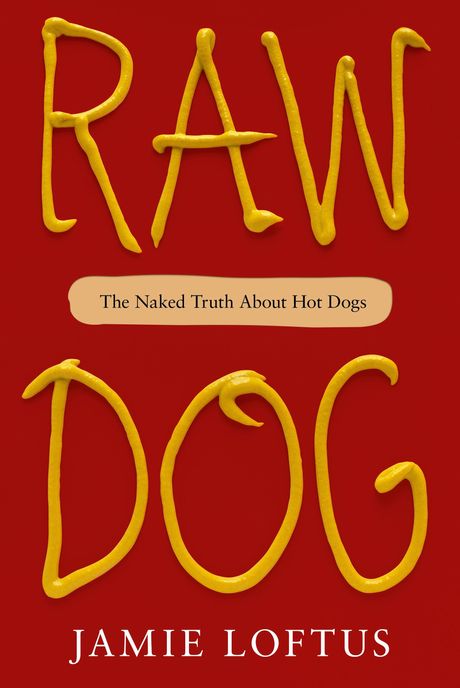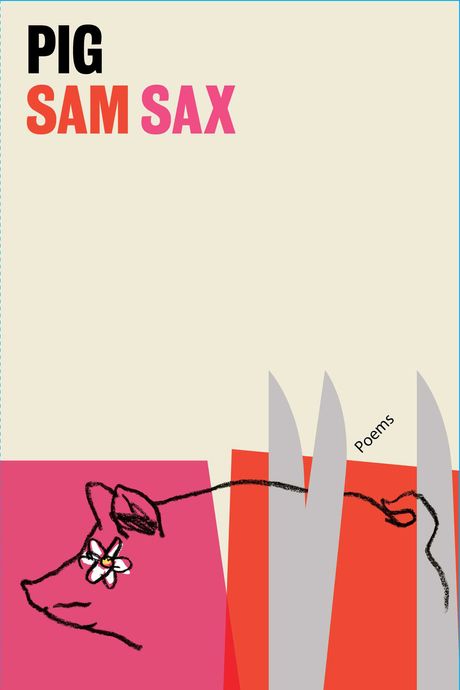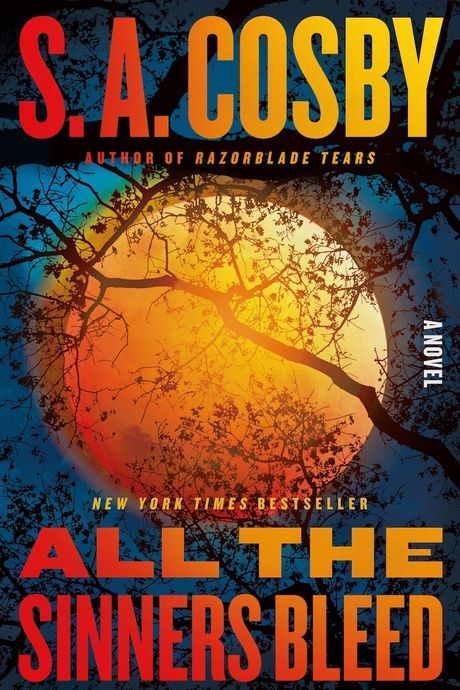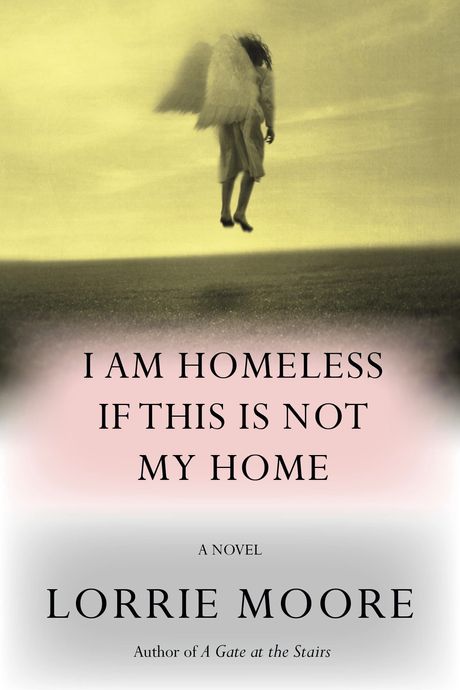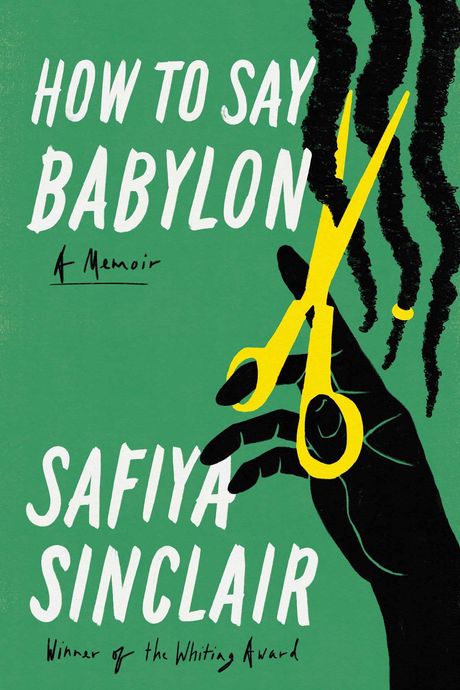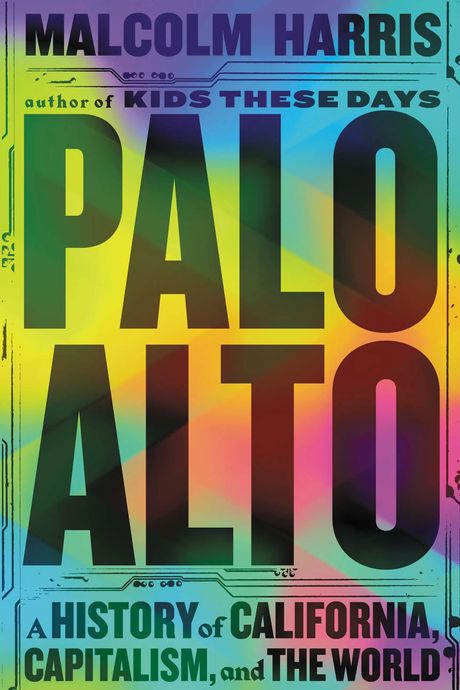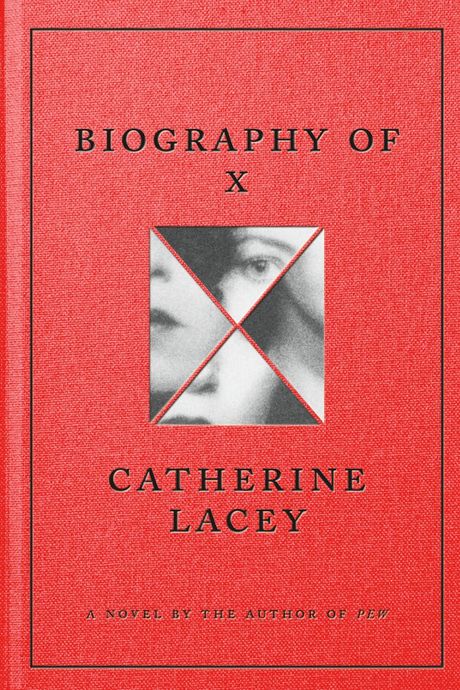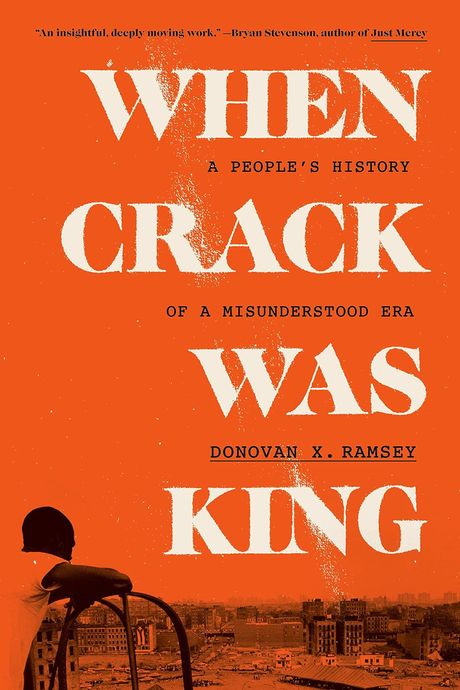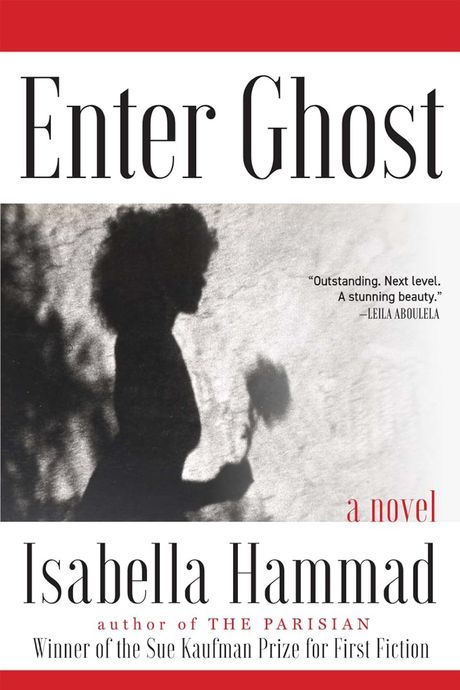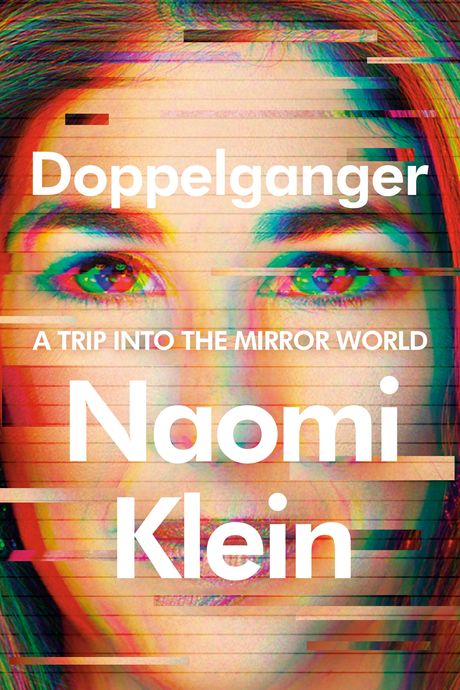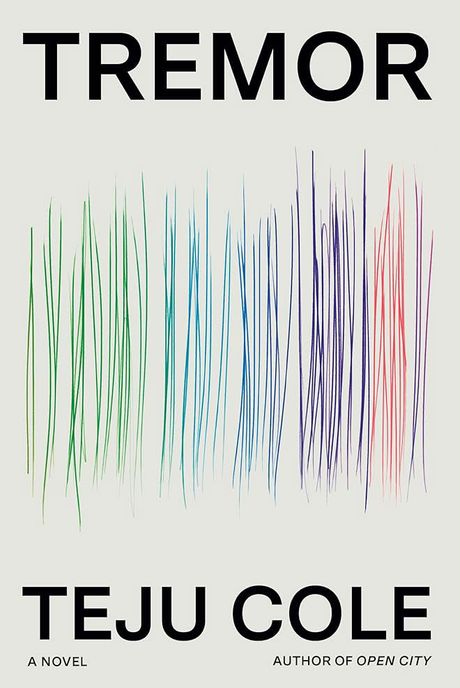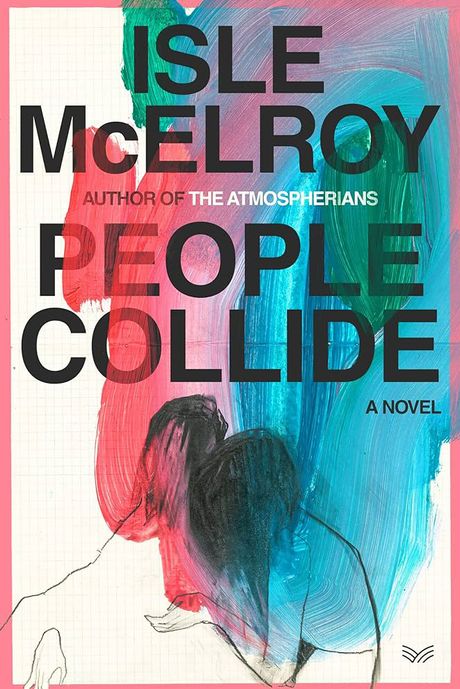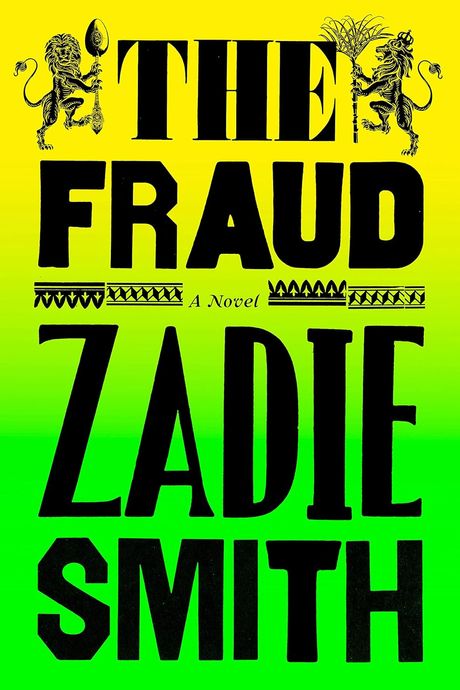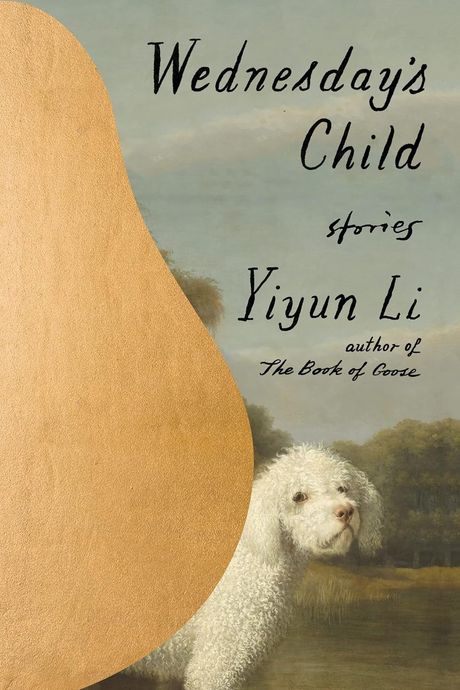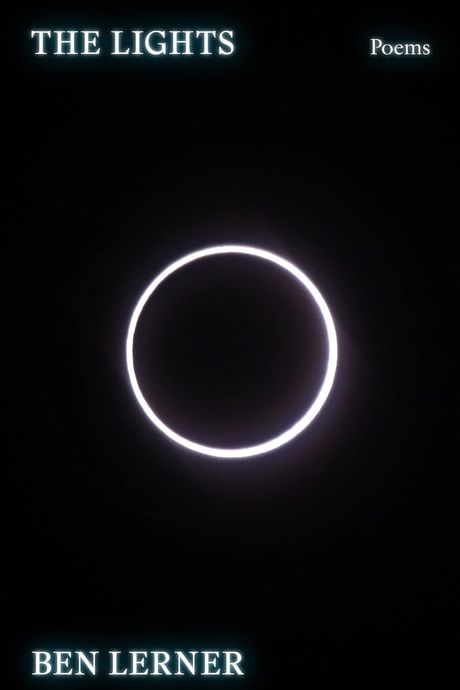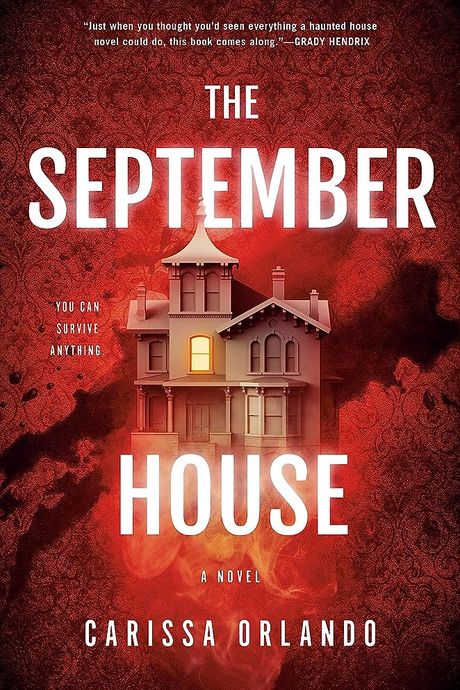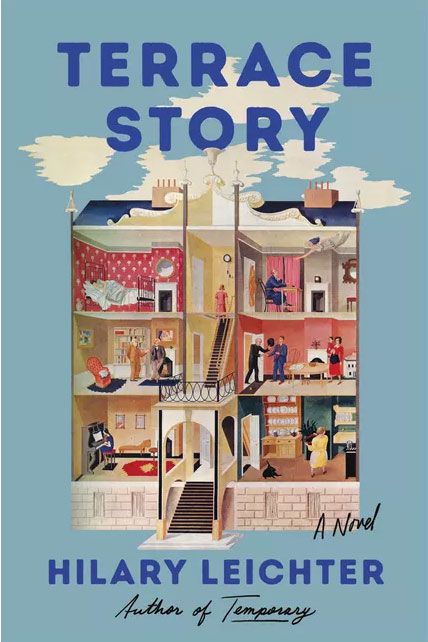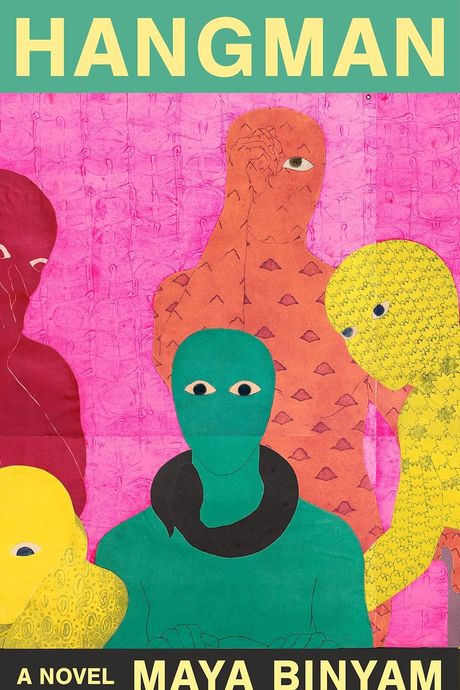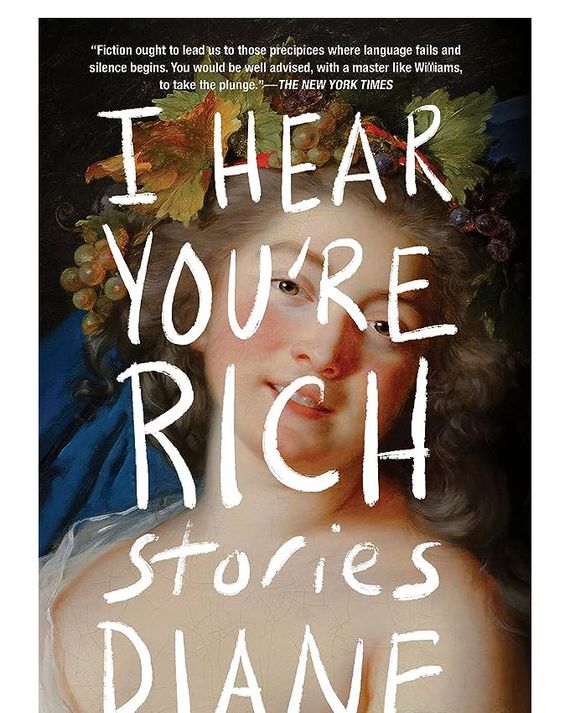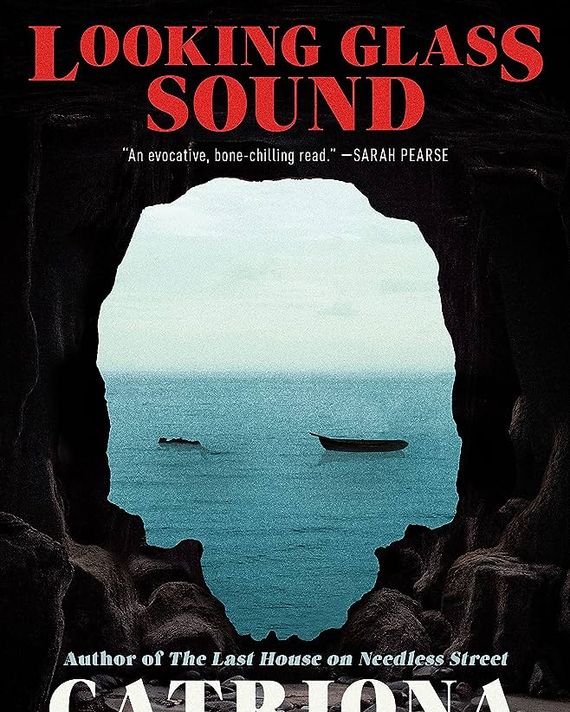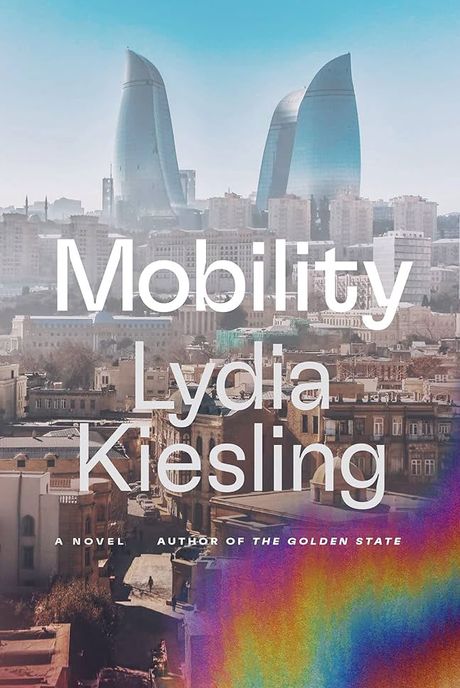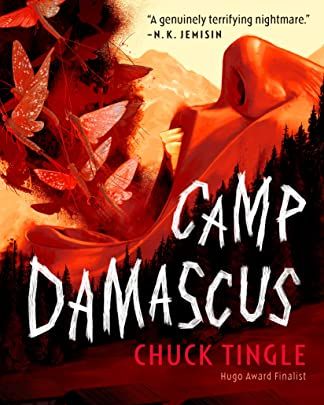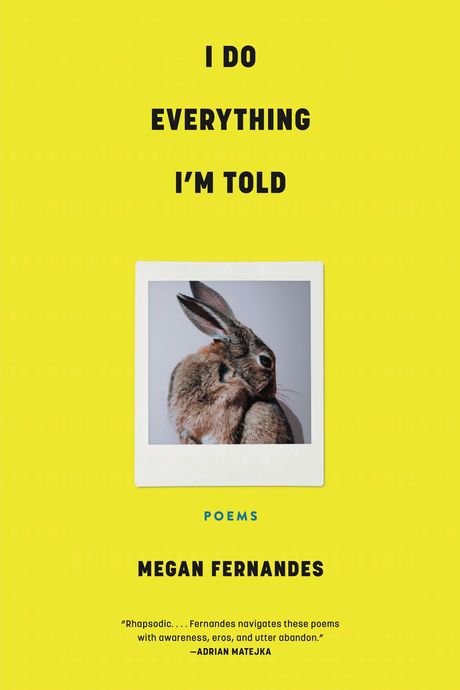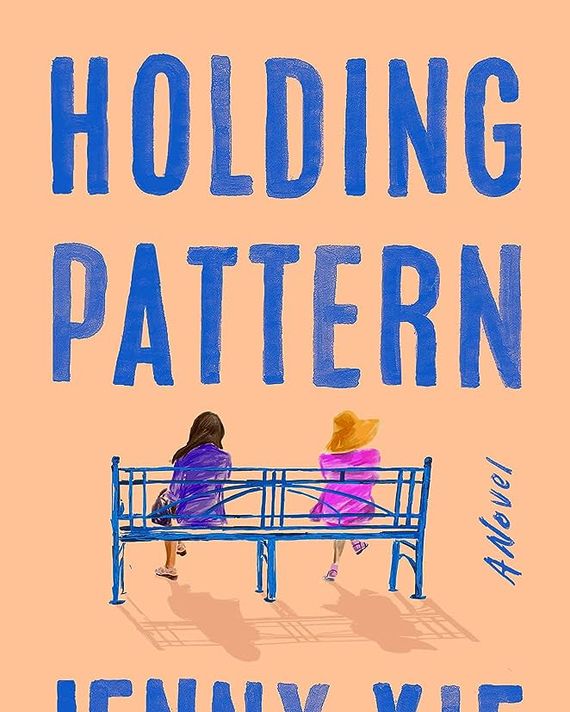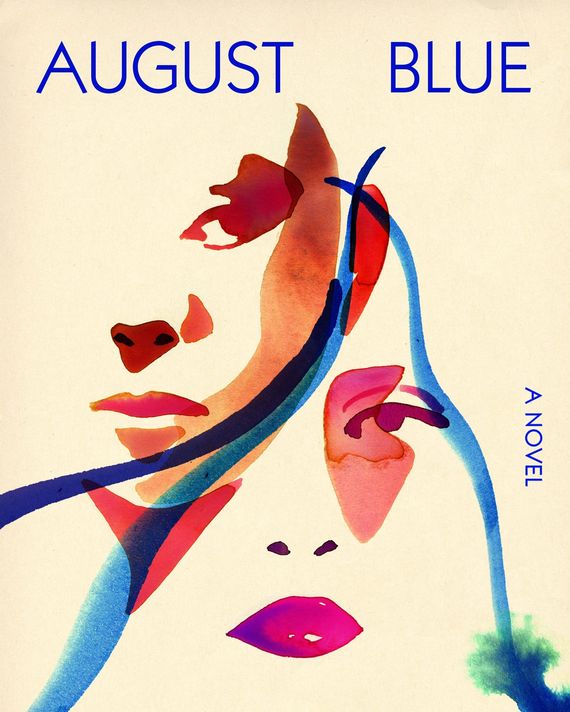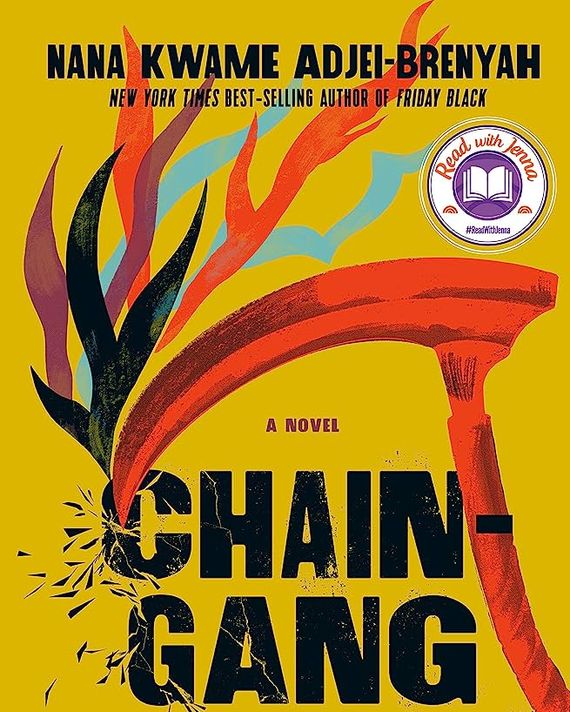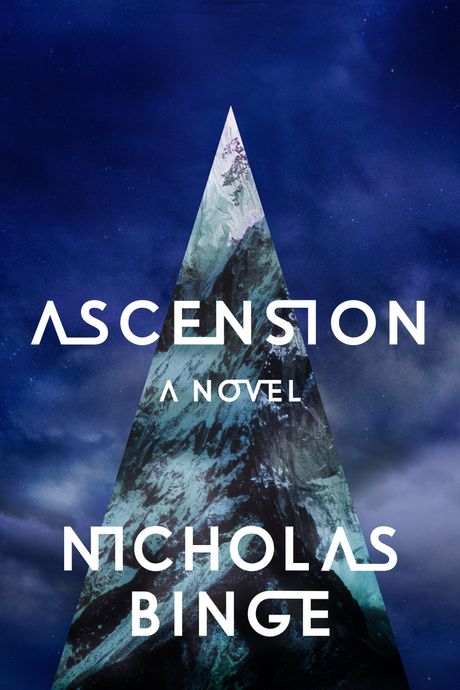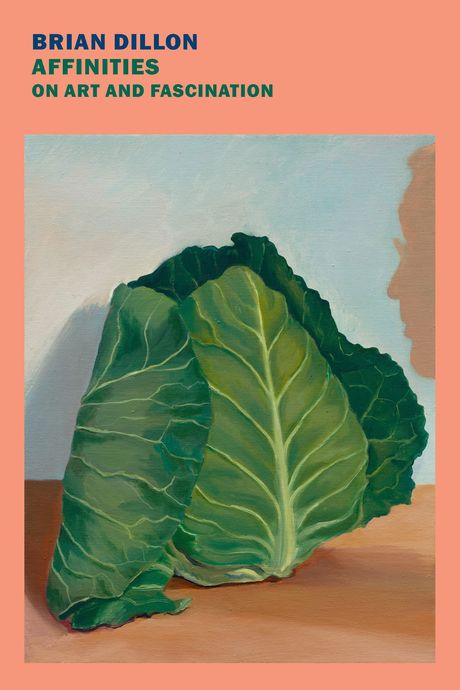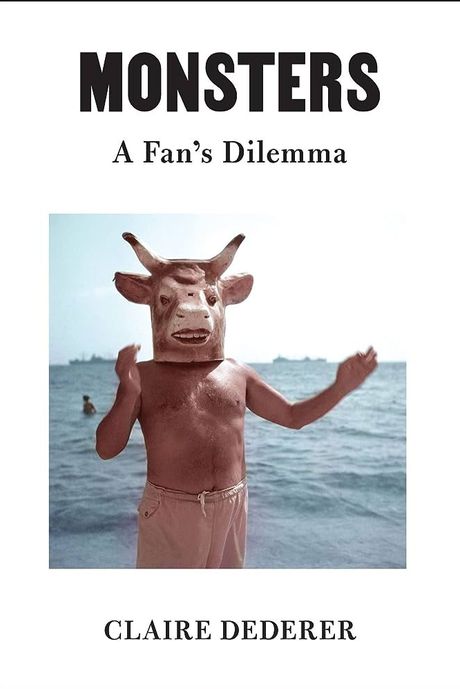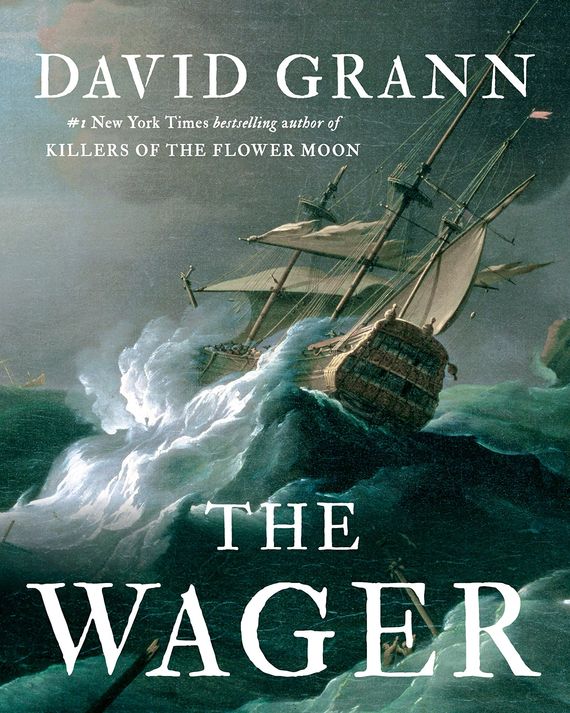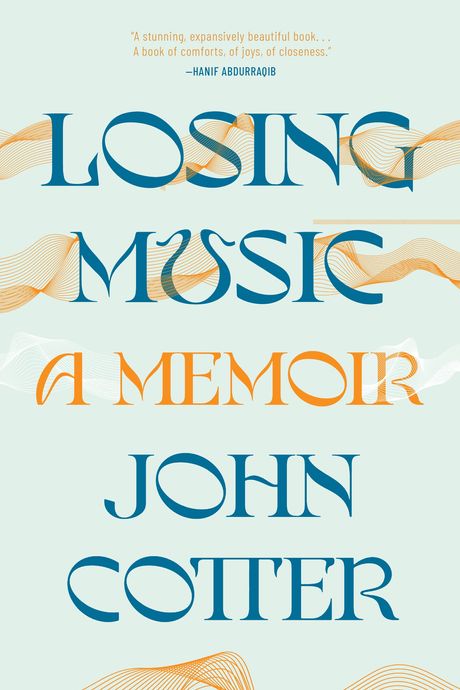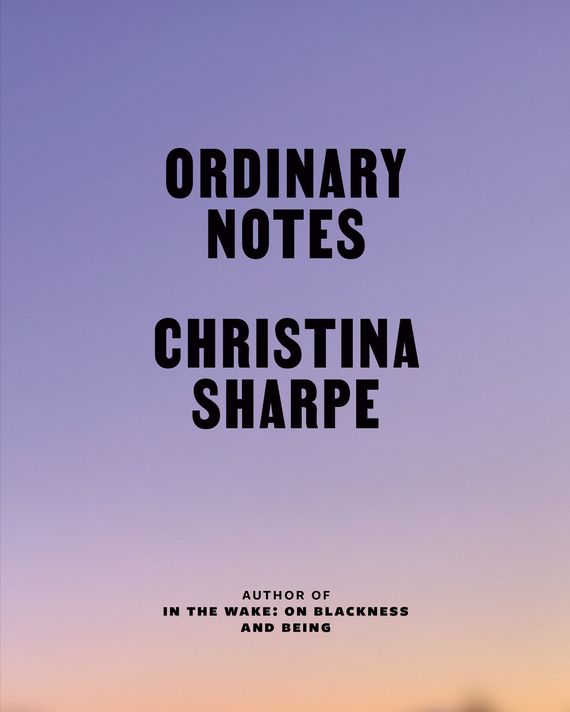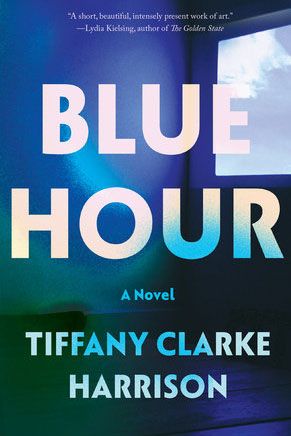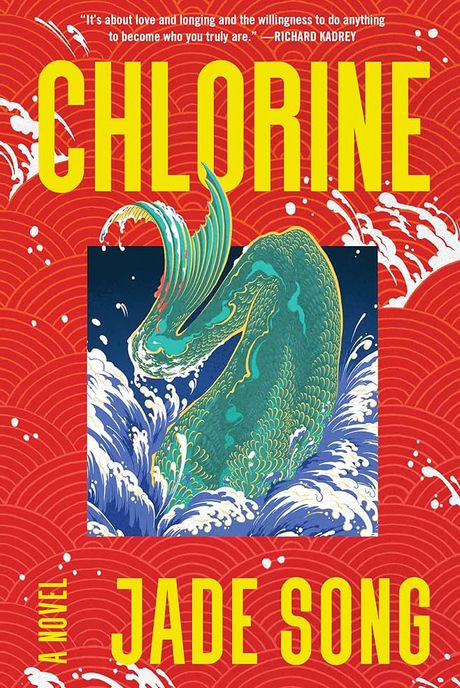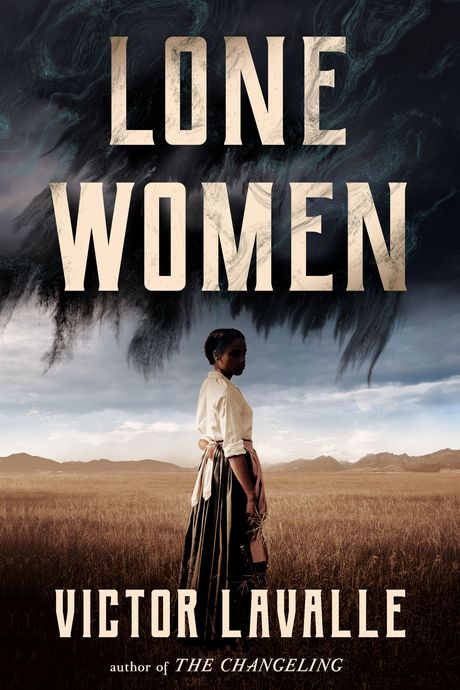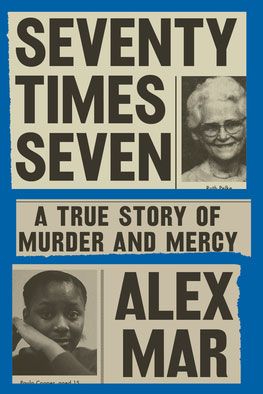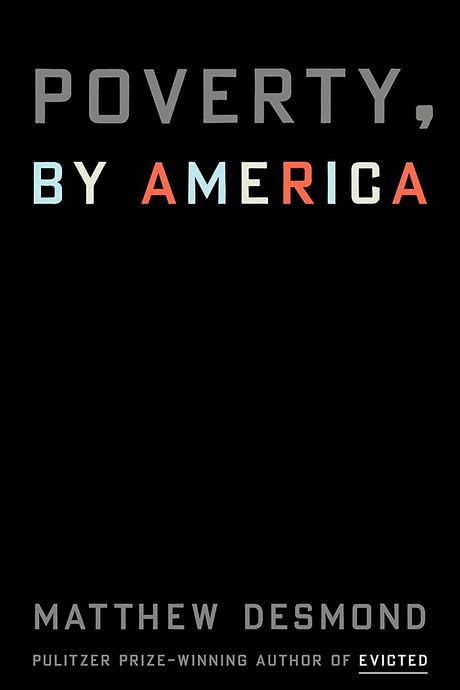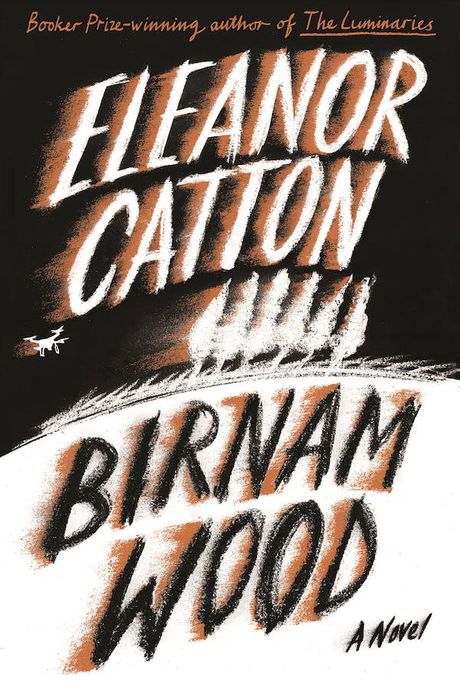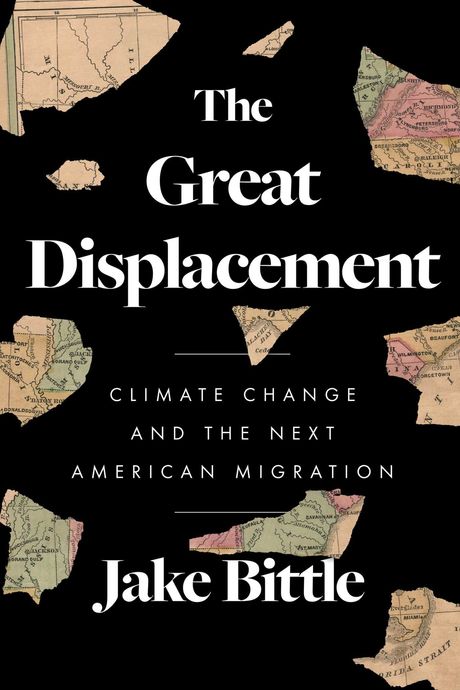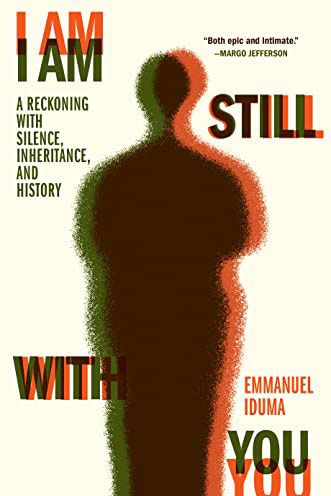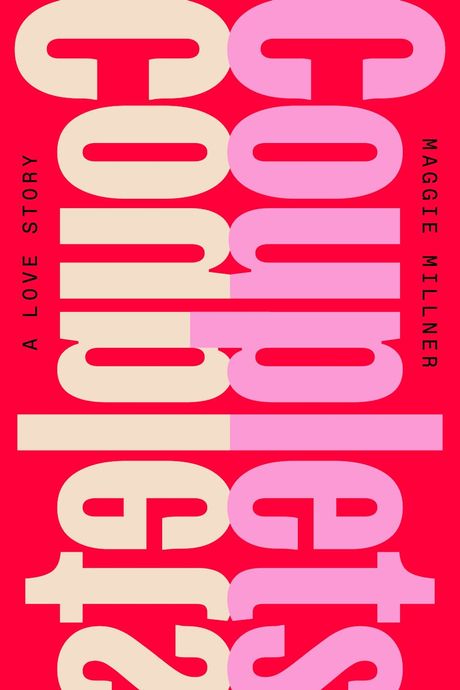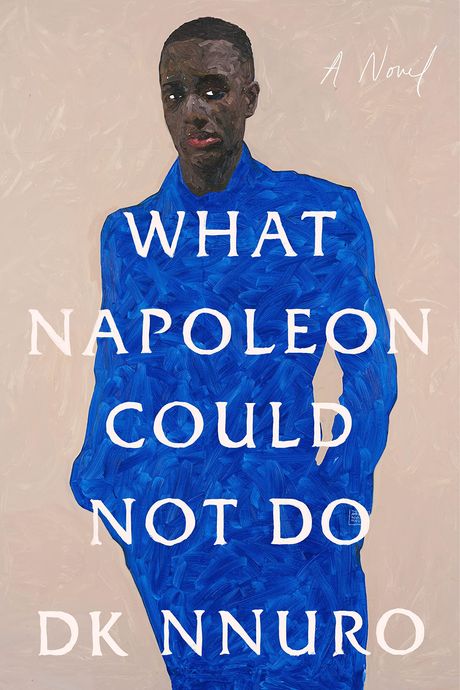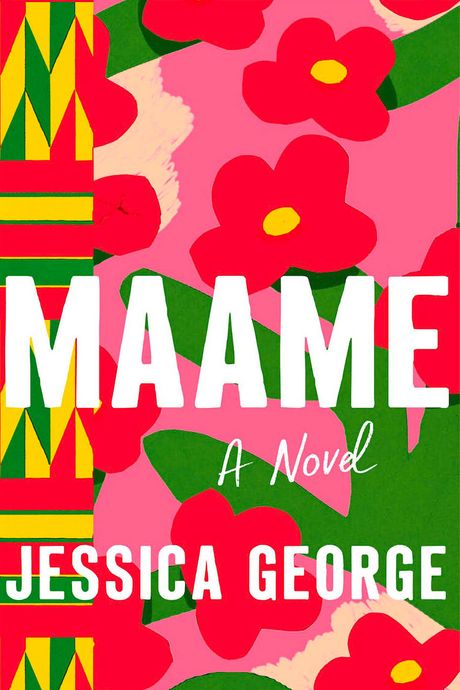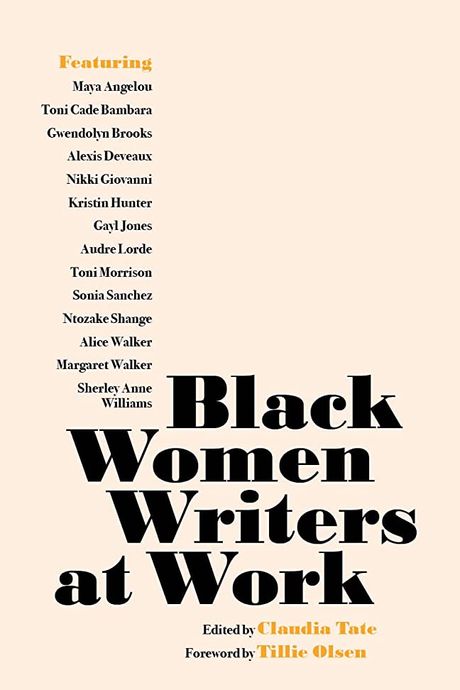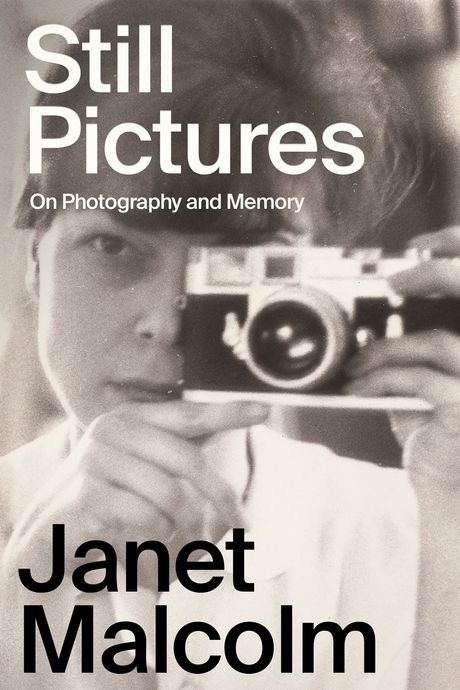
Each year, we experience a bounty of excellent new books being published, and if we’re lucky, we’re able to read a tenth of them by December. 2023 is no different. In a year when many un-consenting authors found their works being used to train artificial intelligence, it feels extra crucial to celebrate original thinking. From heavily reported nonfiction on topics that were hitherto obscured, to thrillers that shocked us after we thought we’d seen it all, to poetry collections that made us rethink our perspective on the world, there was much to enjoy. Here, some of the very best.
10.
Raw Dog, by Jamie Loftus (Forge/Macmillan)
The public appetite for single-topic cultural histories in the vein of Mark Kurlansky’s Salt seems insatiable, so we are very lucky to finally have the definitive consideration of the hot dog. Comedian and podcaster (My Year in Mensa, Aack Cast, and more) Loftus takes us on a journey both silly and profound as she traverses the country on a quest to find the best franks and wieners, filling it all out with the ethnic and economic evolutions of the modest food (as well as its labor history). Packed with fun and some angst and a few digressions on gastrointestinal distress, Loftus’s journeys take her from the Oscar Mayer Wienermobile to Coney Island’s notorious hot-dog-eating contest and all the personalities and politics surrounding them. For extra laughs, listen to the audiobook, which the author narrates in her inimitable voice. Missing that would be as big a sin as putting ketchup on a dog in Chicago.
9.
Pig, by Sam Sax (Scribner)
In a collection organized around an unlikely theme, Pig allows the poet to experiment with form and draw connections between seemingly unrelated phenomena. Sax is concerned with both the literal body of the pig as well as its connotations: as swine, as cops, as unkosher, as dirty, as pop-culture phenomena, as an oftentimes-queer sexual preference. A wholly original mix of comedy and tragedy, Pig contains visual diversity (the circular “Porchetta Di Testa, Or Rolled-Up Pig Face” is a standout) as well as rhyme schemes that hint at the poet’s dark sense of humor. From an ode to Miss Piggy as a queer icon to a poignant yet arch meditation on observing Yom Kippur (“Easy Fast Queers”), Pig ingeniously finds grace in the profane and beauty in the wretched.
8.
All the Sinners Bleed, by S.A. Cosby (Flatiron)
The best thriller of 2023 is a briskly paced, action-packed stunner underpinned by a slew of thorny philosophical and moral questions. For one, is it possible to change institutions, rotten to the core, from within? Titus Crown, a former FBI agent with an impeccably organized closet, thinks it just might be. In 2017, Titus takes a job as the first Black sheriff in his hometown of Charon County, Virginia, a place where monuments to Confederate heroes still stand. A teacher’s murder at the local high school sets off a chain of violence that sends Titus — and Charon County — into a frenzy. As the comfort of his routine falls away and Titus grasps for control, he uncovers the work of a serial killer whose unspeakable crimes have been peppered with religious iconography. Titus’s fevered search for the perpetrator and his reckoning with the conditions that enabled such evil to fester are utterly compelling, but his tender reconciliations with his brother and their ultrareligious father are the true heart of the story.
7.
I Am Homeless If This Is Not My Home, by Lorrie Moore (Knopf)
It’s a travesty that Moore has never won a major literary prize for her novels, and her most recent is a shining example of the style that makes her stand out among other fiction writers. You don’t read Moore for plot but rather for her characters, their emotions, and the off-kilter yet entirely apt thoughts that run through their heads. I Am Homeless begins in New York City in 2016, interweaving a historical epistolary narrative with a weird and wonderful ghost story.Suffering from the kind of grief that bends reality, Finn goes from visiting his brother in hospice to taking a road trip with Lily, his recently deceased ex-girlfriend, to deliver her to a Southern body farm. But don’t worry about the story line! A line from Zombie Lily pinpoints so much of the magic of Moore’s writing: “Jokes are flotation devices on the great sea of sorrowful life. They are the exit signs in a very dark room.”
6.
How to Say Babylon, by Safiya Sinclair (Simon & Schuster)
When a poet of Sinclair’s caliber (Cannibal, 2016) writes a memoir, it almost doesn’t matter what she writes about; she is certain to dazzle with her language. But Sinclair’s history makes for a rich subject matter, having grown up in Jamaica in a Rastafari family. Despite the obtuse American conception of the laid-back Rasta enforced by Bob Marley posters in college dorms, Sinclair’s subjects are both a historically persecuted minority and a fundamentalist sect with stifling constraints built around a patriarchal obsession with women’s purity. Sinclair’s father was the arbiter and enforcer of all Rastafari principles, implementing strict rules on how to dress and behave. Under such stifling influence, Sinclair, her siblings, and their mother, described as a “coven of overachievers,” turn to art and poetry and education of all sorts for sustenance. Year by year, we witness Sinclair’s growth and her awakening to the outside world as she discovers her true priorities and activates her own beautiful voice.
5.
Palo Alto, by Malcolm Harris (Little, Brown)
A sweeping biography of a place where efficiency and profitability dominated long before the tech industry as we know it ever existed, Palo Alto is an astute unraveling of how we got here. In an entirely engaging narrative voice, author Harris considers his hometown, where obsession with optimization illuminates capitalism run amok. Harris uses a wide lens to illuminate how seemingly disparate branches of history are actually connected, starting with the establishment of the suburban Northern California town on stolen land, reaching through 19th-century railroad robber barons and gold-rush fortune-seekers, all the way to 20th-century weapons manufacturing and current-day venture-capital-crazed start-ups. Throughout, Harris foregrounds the exploitation of labor in this wealthy town, the way squeezing productivity out of employees was a feature of Palo Alto’s culture that presaged Silicon Valley’s ill treatment of its lowest-rung workers.
4.
Biography of X, by Catherine Lacey (Farrar, Straus and Giroux)
One of many excellent novels published in 2023 that blur the line between fact and fiction (Same Bed Different Dreams, by Ed Park; The Maniac, by Benjamín Labatut; Blackouts, by Justin Torres), Biography of X plays with the slippery borders between real-life historical figures and fictional characters. The artist X is a Kathy Acker–type maverick whose shape-shifting identity through the decades has created a mythos around herself and her work. When she dies, her widow attempts to write a book about her life, and the research leads to unexpected places and some pertinent questions: Can we ever really know someone? As a fan? As a spouse? Was X’s whole life’s work just an elaborate bit?
On top of X’s story, Biography of X is also an alt-history of America in which the Northern and Southern Territories of the country have reunified after splitting at the end of WWII. Lacey pulls off a virtuosic feat in footnotes and endnotes, embedding fictional events for real-life characters in the world of the book (one citation is a Renata Adler book of reporting from undercover in the Southern Territory published by FSG in 1978). Lacey nails the aphorisms of a downtown legend, the ones that come from real sources and fictional ones. Every detail is immaculate.
3.
When Crack Was King, by Donovan X. Ramsey (One World)
Ramsey’s debut work of reported nonfiction is both a deeply researched and deeply felt exploration of the 1980s crack epidemic told from many angles. Throughout the book, Ramsey alternates between chapters that detail what was happening legally and culturally in American society as a whole, juxtaposed with the personal stories of four people whose lives were profoundly changed by the rise of the drug. His extensive interviews with Lennie Woodley in South Central Los Angeles, Elgin Swift of Yonkers, Shawn McCray of Newark, and Kurt Schmoke of Baltimore provide a much-needed counterpoint to the sensationalist media coverage that aided in utterly dehumanizing the epidemic’s victims at the time. He also shows how, after politicians and police declared a war on drugs rather than helping those in need, the communities that were most vulnerable managed to save themselves.
2.
Enter Ghost, by Isabella Hammad (Grove)
It’s both a truism and wonderful cliché that art is essential in times of turmoil, that great art can help to make sense of the world even if it’s not nearly enough to save us. Hammad’s astonishing second novel captures this bittersweet contradiction in the story of Sonia Nasir, a Palestinian London actress, who returns to Israel to visit her sister and is enlisted to play Gertrude in an Arabic staging of Hamlet to be performed in the West Bank. In the shadow of IDF checkpoints and interrogations, the cast mounts a scrappy and spirited production infused with subtext, even as it accounts for a production in which Ophelia was portrayed as a suicide bomber. Flashbacks from Sonia’s childhood summers in Haifa underscore how it is never too late for a political awakening, especially under circumstances that are as devastating as any Shakespearean tragedy.
1.
Doppelganger, by Naomi Klein (FSG)
No recent book has better captured the absurdities and perils of the current moment in politics and culture and digital life than Doppelganger. The premise might seem gimmicky: Progressive writer Klein explores how the other author with whom she’s constantly confused, Naomi Wolf, became red-pilled. But Other Naomi’s descent into right-wing madness is just a jumping-off point for Klein to explore a shadow world that exists concurrent to our own, where facts are malleable and disinformation is abundant, where conspiracy theories distort and exploit our very legitimate fears, and where fascism can arise as democracy’s evil twin.
This book is a must-read even before Klein gets to unforgettable observations about ethnic doppelgängers and her experience as a Jewish woman who once reported from Gaza. With humor and empathy and a sharp eye that can deconstruct systemic injustices with the same ease as Twitter drama, Klein uses copious film and literary references as she skewers everything from the wellness industry to AI.
Other Books Highlights From This Year
Throughout the year, Vulture maintained a “Best Books of the Year (So Far)” list. Many of those selections appear above in our top-ten. Below, the rest of the books that stood out to them this year, presented in order of release date.
Tremor, by Teju Cole
Teju Cole’s visual medium is photography, and lately, his written medium is the essay. With Tremor, he returns to the novel after 12 years, threading his tendency toward analysis and explication with scenes from the life of the protagonist, Tunde, who, like Cole, is a Harvard professor. At the start of the book, he is separated — hopefully, not for good — from his wife, Sadako. He is also considering the ethics of the roles he inhabits: lecturer, workshop leader, photographer, traveler, and viewer. How can one make or even behold art without assuming a dominant position? Cole considers this question alongside close readings of pastel drawings made by “the most prolific serial killer in American history”; the painting of a lesser-known Flemish master, Landscape With Burning City; Ingmar Bergman’s film Winter Light; the garden Sadako carefully maintains; and Tunde’s own photographs capturing someone else’s “private property.” Fans of other essayistic novels, including J.M. Coetzee’s Elizabeth Costello and Rachel Cusk’s Outline trilogy, will appreciate Cole’s vision. —Maddie Crum
People Collide, by Isle McElroy
Isle McElroy’s 2021 debut, The Atmospherians, established them as a daring new voice in fiction; their spectacular follow-up makes it clear that their voice can’t be pinned down. People Collide, which follows a man who suddenly finds himself in his wife’s body, shares the speculative genre, but where The Atmospherians used absurdity to skewer toxic masculinity, People Collide — though not devoid of humor — brings real gravity to profound, ultimately philosophical ruminations on bodies, gender, alienation, and love. Their exploration of the interplay among power, sexuality, and subversion extends beyond the body-swap, a narrative device that, in less masterful hands, might be a gimmick. The narrator, Eli, tells us immediately that his wife — the more successful of the two and whose job has brought them to Bulgaria — is courageous where he is not; their gender roles are already upended when their bodies switch. How do our expectations of ourselves bleed into our understanding of others? What are the limitations of love, and how are we imposing them? McElroy provokes questions that will linger in your mind long after you’ve finished the book.
Note: Isle McElroy is a contributor to this list but was not involved in the selection of People Collide.
The Fraud, by Zadie Smith
Eliza Touchet has been working as a maid for William Harrison Ainsworth, a novelist whose popularity is in serious decline, for decades. William, her cousin by marriage, briefly outsold Charles Dickens, but his real talent is in his naïve sociability — even with writers who secretly, and sometimes openly, laugh at his incredibly tedious books. (In one of the novel’s funniest bits, Smith reprints a chunk of text from a real-life Ainsworth novel, an unreadable nest of description.) Eliza doesn’t have much respect for him either — she’s too smart for most of the people around her, especially William’s new wife, who’s obsessed with a trial involving a poor man who claims to be the lost heir to a massive fortune. But Eliza eventually gets involved in the media circus around the case, striking up an uneasy acquaintanceship with its star witness, Andrew Bogle, a formerly enslaved man. Zadie Smith has said her new novel is an attempt to really understand who the Victorians were. In The Fraud, they’re as diverse, strange, and hopeful as any of us. —Emma Alpern
Wednesday’s Child, by Yiyun Li
In the title story of her early collection, “Gold Boy, Emerald Girl,” Yiyun Li brought together two characters who hadn’t realized they needed each other; by chance or fate, they clicked into a simple, unromantic intimacy, not as a family but as a more original and less painful arrangement. Li’s career has spanned several mediums since then: a memoir of her life as a reader and several novels, including last year’s PEN/Faulkner-winning The Book of Goose. But these moments of genuine and surprising closeness — between estranged friends, between 19th-century writers and their contemporary readers, between care workers and new mothers, between mothers and their tragically lost children — appear throughout. In her latest book’s titular story, Wednesday’s Child, the narrator wonders whether she shouldn’t have introduced her daughter to a melancholic writer so soon. In “A Sheltered Woman,” postpartum difficulties are narrated through the eyes of a childless nurse. In “Let Women Doubt,” a woman takes a trip to Paris that she’d bought as a gift for her brother, who overdosed. “Overdose,” she considers. “One of the quickest ways to turn a young life into a data point.” One of the most affecting ways to reverse that harm: to tell a story. —M.C.
The Lights, by Ben Lerner
Ben Lerner’s return to poetry begins with an “Index of Themes” both intimate and grand, including “poems / about stars and / how they are erased by street / lights,” and “Poems about you, prose / poems.” In the decade and some since he last published a book of poems, he’s written, among other projects, three increasingly personal novels; his most recent, The Topeka School, draws from his high-school debate years and his parents’ study of psychology, of babble, of talking without really speaking. Although it sometimes includes confessional passages, it isn’t only a diaristic story of boyhood; Lerner searches his personal life for political themes, and seems uninterested in, or incapable of, relating scenes without that extra, analytical layer. The same spirit animates The Lights: In “The Rose,” a narrator much like Ben Lerner shares an anecdote about his great-grandmother, who suspects that the staff in her assisted-living facility are sneakily altering her paintings. To quiet her worries, his cousin suggests that they must at least be handling the work delicately: “No smudges on the glass.” It’s a funny family memory, but also, Lerner writes, “an itinerary for art criticism, during a crisis of long-term care.” “The Rose,” and the entire collection, reaches toward authentic, unfiltered, even unanalyzed feeling. Its narrator begins by considering “the advent of the credit economy” and whether folk music ought to reckon with our knowledge that “stars don’t twinkle.” But in the end, after happening upon a stranger’s blunt note detailing a fight with a partner, he looks up in tears. “Folk music is for all of us,” he writes. —M.C.
The September House, by Carissa Orlando
Margaret’s house is, to put it mildly, extremely haunted, but she has learned to live with it. She coexists nicely with the ghostly maid who brews her tea, dodges the slightly feral spectral boy who likes to bite her, and has a priest come in monthly to bless the house. She also never, ever, ever goes into the basement. The haunting gets exponentially worse every September — think bleeding walls, agitated spirits, and persistent moaning — and when her husband can no longer face another autumn in the house, he disappears without a word. But after Margaret’s headstrong daughter, Katherine, concerned about her absent father, insists on coming to stay just as September begins, all of Margaret’s carefully constructed coping mechanisms threaten to come apart at the seams. Margaret is a delightfully well drawn protagonist, sturdy, unflappable, and often dryly funny, but as the narrative unfurls, we learn that the reasons for her strictly regimented behavior are neither simple nor pleasant. I have to admit, I had a moment of doubt about whether Orlando could stick the landing on this book, but I’m thrilled to say she did, and beautifully at that. The September House is a surprising, engaging debut that unspools into a thoughtful psychological examination of domestic violence. —Emily Hughes
Terrace Story, by Hilary Leichter
The follow-up to Hilary Leichter’s stunningly original debut, Temporary, is a novel as structurally imaginative as it is emotionally expansive. Stephanie can make objects around her grow as she wishes — she can conjure a terrace for her friends, a young couple with a baby and a tight budget, in their tiny apartment. Still, Stephanie is lonely, and the physical world bends to mirror the dimensions of her “craving, a longing so deep inside her that it was outside her body.” In the book’s four sections, each named for an architectural feature, what may at first feel like distinct stories begin to thread together into family lineages across the expanse of time. Yes, this is largely a book about space, from real estate to the distance that can settle in between intimate partners, but it’s also an unsettling meditation on proportion, conservation, and what is lost to get what we want. Recurring motifs and phrases echo throughout; with each encounter, they feel at once familiar and new, like realizing mid-dream that you’ve dreamed about this place before. —Jasmine Vojdani
Hangman, by Maya Binyam
Most immigrant novels of recent vintage share a single plot: a bright and hopeful person from the global south travels to a rich country in the global north and discovers that reality does not resemble their dreams. Maya Binyam’s Hangman immediately upends expectations by moving in the opposite direction — away from the adopted country and back toward the abandoned one. Hangman upends expectations in other ways as well — Binyam withholds details that feature prominently in most immigrant tales, like the name of the country her protagonist comes from and the name of the country where he lives. Binyam’s tale, instead, foregrounds absence, and invites us to fill in the gaps that recur throughout the novel. In so doing, she is inviting us to question our expectations about these kinds of stories, and to contemplate the possibility that the varied lives of immigrants the world over cannot be rendered effectively in narrative cliches. This is a bold, courageous, and resonant book. —Tope Folarin
I Hear You’re Rich, by Diane Williams
You might call Diane Williams’s plots dreamlike — they proceed according to their own mysterious logic, interrupting themselves — but they’re not hazy. Her voice is declarative, even blunt. Her narrators make forceful assertions about household objects and uncouth remarks at dinner parties. If her super-short stories are surprising, even shocking, her style is always reliable. Since the ’90s, Williams — who started writing in middle age — has worked to turn the everyday stuff of realist fiction into props for existential fun houses. Like her other collections, So I Hear You’re Rich will please fans of Lydia Davis and David Lynch. —M.C
Looking Glass Sound, by Catriona Ward
Mind-bending, gasp-inducing, and impossible to put down, Looking Glass Sound is horror-thriller superstar Catriona Ward’s best work yet. Put dark academia, murder mystery, coming-of-age saga, and gothic metafiction into a blender, add a pinch of witchcraft, and garnish with a narrator who isn’t especially reliable even before his memory starts to fail him, and you still won’t be able to touch the brilliant weirdness of this book. You’re best served going into it knowing as little as possible about the plot, but broadly, it’s about aging, betrayal, memory, the immortality of stories, a serial killer called the Dagger Man, and the way time and reality seem to bend where the land meets the water. Ward’s lustrous prose bolsters her ambitious storytelling, carrying the reader through passages in which the plot seems close to spinning out of control. But fear not: Put yourself in Ward’s terrifyingly capable hands and go where she leads you. You won’t be disappointed. —E.H.
Mobility, by Lydia Kiesling
Zando’s Crooked Media imprint made a strong start this year with its debut release, Kiesling’s thoroughly researched examination of personal complicity in political violence. Beginning in Azerbaijan in 1998 and spanning decades and continents, Mobility tracks protagonist Bunny Glenn’s trajectory through the ranks of the oil industry, influenced by her interactions — both passive and active — within the worsening climate crisis, the war on terror and its resultant ethnocentrism, insatiable consumption under capitalism, and the effects of her own privilege. It’s both appropriately damning and beautifully rendered. —Arianna Rebolini
Camp Damascus, by Chuck Tingle
You may know the pseudonymous internet sensation Chuck Tingle best from his extremely memeable self-published erotica titles — Space Raptor Butt Invasion and Pounded in the Butt by My Own Butt are just two of literally hundreds of examples — or from his signature look, an omnipresent pink cloth mask and sunglasses. But Tingle is much, much more than an interesting piece of internet ephemera, as evidenced by his traditional-publishing debut, Camp Damascus. Our protagonist, Rose, lives a sheltered life as a member of an ultraconservative Evangelical community, one that also happens to run the most effective conversion camp in the country. Rose’s growing exploration of her own queerness coincides with a frightening series of events and manifestations: demonic figures lurking in the woods (wearing uniformlike red polo shirts), vomiting flies, and increasingly menacing behavior from her parents. To find the truth, Rose must seek out the survivors of Camp Damascus and confront the evil at the heart of her community. Tingle writes engagingly and sensitively — Rose’s autism is key to who she is and how she navigates what’s happening to her, but it’s never exploitative — and the love story at the book’s center is enough to melt even the most hardened cynic. It’s a bighearted, chilling ride that proves the author’s mantra over and over: Love is, indeed, real. —E.H.
I Do Everything I’m Told, by Megan Fernandes
Megan Fernandes’s third collection of poems, I Do Everything I’m Told, injects new life into the love poem. The book skates thrillingly between desire and race and sexuality, her writing smart without ever lecturing. “Letter to a Young Poet,” for instance, feels like taking a meandering walk with one of your most brilliant and curious friends. “To want the same things as you age is not always a failure of growth,” Fernandes writes, delivering a clear stab of wisdom, before dropping into a pair of arresting claims: “A good city will not parent you. Every poet has a love affair with a bridge.” But the collection is at its most confident and vulnerable when Fernandes writes about heartache and desire. In “Drive,” the speaker grasps through the aftermath of a breakup and the cliches it inspires but eventually stumbles upon a profound sense of acceptance: “Contradictions are a sign we are from god. We fall. We don’t always get to ask why.” Fernandes’s poems are aching and sly. They capture everything beautiful and insufferable and enormous about falling in love. —Isle McElroy
Holding Pattern, by Jenny Xie
Kathleen Cheng, the protagonist of Jenny Xie’s debut novel, Holding Pattern, has been going through it. After her boyfriend dumps her and she drops out of grad school, Kathleen leaves her life on the East Coast behind and moves back home with her mother in Oakland. She starts a new job as a “certified cuddle provider,” for which she physically holds strangers for money, and develops a surprisingly intimate connection with one of her clients. Smart, disquieting, and almost startlingly of the moment, Xie’s novel is a fascinating exploration of the power of touch and the strength it takes to hold up other people and ourselves. —Mary Retta
Lament for Julia, by Susan Taubes
In Lament for Julia, the titular character is possessed by a demon, a supernatural being reluctant and confused about spending all time inside the mind, body, and home of such an ordinary girl. As the demon gets to know Julia’s whims and earthly hangups, he slowly gets attached, but he remains a sharp and funny critic of human drama, which he considers petty. If the meta-conceit of an author inhabiting a character — or any storyteller inhabiting a version of her life that’s now over — seems on the nose, Taubes’s style makes it richer and more deeply felt than all that. Formally, she has been described as the Renata Adler of the ’50s and ’60s, which isn’t far off. Her voice is assertive, but her plots are as disorienting as the decades she lived through. —M.C.
August Blue, by Deborah Levy
Over the past decade, Deborah Levy — a widely acclaimed playwright, poet, and fiction writer — has published a trio of slim autobiographical books exploring her evolving love life, artistic ambitions, friendships, and affection for horses. With her latest, August Blue, Levy once more delves into these themes — this time in a fictional context. A piano virtuoso abruptly walks offstage in Vienna mid-performance and eventually finds herself in Athens, where she observes a woman buying two mechanical horses at a flea market. The pianist grows besotted with the horses — and with the woman who purchased them, who could be her doppelgänger. Levy writes in delicate, evocative strokes — a style that complements an elegant story about the fluidity of identity and the profound aftershocks of loss. This is not a story that proceeds directly from one plot point to the next but meanders toward meaning. You may very well discover something about yourself as you journey through these evocative pages. —T.F.
Chain-Gang All-Stars, by Nana Kwame Adjei-Brenyah
Nana Kwame Adjei-Brenyah’s debut novel, Chain-Gang All-Stars, is a dazzling and mightily ambitious work of speculative fiction. Set in a postapocalyptic future, the book follows the lives of incarcerated people who are asked to fight one another to the death on live television in an effort to win their freedom. The plot mainly follows the lives and battles of Loretta and Hurricane, lovers fighting on the same team, or “Chain.” Adjei-Brenyah’s use of multi-person perspective is masterful: Each chapter changes narration from a fighter, to the man who drives the van to and from the battlefield, to the people who prepare the meals in the prison, to the audience members gleefully placing bets on their favorite fighters as they watch the bloody battles from home. A stunningly original and unflinchingly honest piece of satiric genius, Chain-Gang All-Stars not only showcases the horrific spectacle of the prison industrial complex but highlights how everyone is somehow complicit. —M.R.
Ascension, by Nicholas Binge
When a mountain that’s taller than Everest by a good 10,000 feet appears in the middle of the Pacific Ocean overnight, physicist Harold Tunmore is one of a handful of experts recruited for a top-secret summiting expedition. But the secrecy around the operation and the mountain itself raise more unsettling questions. This isn’t the first group to attempt the climb — the previous group’s sole survivor was Harold’s estranged wife Naoko, who is no longer entirely attached to reality. They’re not far out of base camp when Harold starts seeing events from the past and future playing out in front of him on the icy crags and the climbers are beset by horrific, tentacled beasts and strange portals through space and time. The further they climb, the more Harold gets the sense that he is no longer himself, but the need to reach the summit becomes more overpowering by the hour. Perfect for readers who loved Jeff VanderMeer’s Annihilation, Ted Chiang’s Story of Your Life, or Jon Krakauer’s Into Thin Air, Ascension is thrilling, breathlessly paced, and poses thorny questions about time, fate, grief, and the nature of the self. Is it the accomplishment that makes us human or the quest? —E.H.
Affinities: On Art and Fascination, by Brian Dillon
In this collection of essays, Brian Dillon arrives in critical spaces through personal avenues. His writing about his relationship with his aunt — a woman who became a shut-in, photographing the perimeter of her yard, growing a body of work, developing a style — opens up into a theory about careful looking as an outgrowth of anxiety. In a series of belles lettres on the artists to whom he’s drawn — many of them photographers, including Francesca Woodman, Claude Cahun, and his aforementioned aunt, some of them using the medium to explore gender fluidity, others the natural world — Dillon develops an argument on the meaning of “affinity.” It’s not always rational, which works we most identify with; it’s both simpler and more magical than that. —M.C.
Monsters, by Claire Dederer
Claire Dederer’s Monsters is the book I have most enthusiastically recommended to friends this year. Moving between art criticism and memoir, Monsters shifts perspective away from the artists who have behaved badly to the admirers of their work. Instead of focusing on the “monsters,” Dederer interrogates how we ought to relate to work that has so deeply moved us and shaped our connections to art. She is an astute and ruthless critic of the artists she chronicles and of herself. Her essay on Lolita is one of the smartest, most coherent responses to the knee-jerk alarmism that so often floods conversations about the novel, and her ability to empathize with the selfishness of creation while condemning its collateral damage is mesmerizing and profound. Her conclusion on the final page that we “don’t love the deserving; we love flawed and imperfect human beings” has been stuck in my head since the day I finished the book. —I.M.
The Wager: A Tale of Shipwreck, Mutiny and Murder, by David Grann
Nautical nonfiction gets pigeonholed as a “dad” genre, but The Wager deserves the widest audience. David Grann, known for his best-selling true-crime investigation Killers of the Flower Moon, wades through the dense history of 18th-century British warships, their crews, and the imperialist powers that sent them across the seas and homes in on the story of a man-of-war doomed to wreck on a deserted Patagonian island. More than a year after the Wager set sail from England, 30 of its men arrived on the shores of Brazil in a hardscrabble boat made of the ship’s wreckage, describing their heroic survival and escape. Six months later, though, another vessel washes ashore in Chile, carrying three survivors who tell a different story of their months on the deserted island — one of anarchy, betrayal, and murder. The Wager is a historical page-turner — suspenseful not only for its narrative but its ability to reveal the shaky ground beneath the histories we’ve accepted as truth. Whose account do we believe and why? Shocking, enthralling, and informative without ever getting dry, it will captivate any thriller fan. (Unsurprisingly, Martin Scorsese and Leonardo DiCaprio already have the adaptation rights.) —A.R.
Losing Music, by John Cotter
John Cotter’s memoir, Losing Music, follows his experience managing Ménière’s disease — a condition involving tinnitus, vertigo, and sporadic hearing loss — and navigating America’s health-care system as an uninsured adjunct professor. Cotter writes about hearing not only as a sensation but as a gateway to memory and other senses, which, he observes, are inextricably linked. “You hear a bad Billy Joel song in the freezer aisle at Safeway and time is refuted,” he writes. Just as sight can aid his hearing, his partner assists him in navigating his most vertiginous days. Cotter writes about the embodied experience of hearing loss vividly and within a network of contexts: that of caregiving and that of medical science’s many unsolved mysteries. —M.C.
Ordinary Notes, by Christina Sharpe
The title of Christina Sharpe’s third book, Ordinary Notes, serves as a prism for evaluating its contents. What exactly is ordinary, Sharpe seems to be asking, and to whom? Much of what appears in these pages might not seem ordinary at first blush — Sharpe presents a compendium of ideas, arguments, letters, pictures, and autobiographical musings about the Black experience in America and throughout the world. But this is precisely what Sharpe is getting at: She asserts that history has rendered the extraordinary — extraordinary pain, extraordinary suffering — ordinary by refusing to acknowledge and contend with the range of abuses that Black folks have experienced for centuries. Sharpe also elevates the ordinary — ordinary lives, ordinary thoughts — by lavishing each subject she writes about with careful attention and vivid prose. The book is vital and extraordinary. —T.F.
Blue Hour, by Tiffany Clarke Harrison
In Tiffany Clarke Harrison’s graceful, searing debut novel, a narrator — writing directly to her husband, Asher — picks apart her fears of parenthood, drawing connections between those apprehensions and a family accident, her recent pregnancy loss, and the police shooting of a Black boy named Noah, a quiet, anime-loving student in her photography class. Before these devastating events, she and Asher reveled in “late nights and liquor and displays of whatever the hell we wanted.” After, they’re withdrawn from each other, keeping secrets and fumbling their attempts at connection. Yet the narrator keeps fantasizing about conversations they had in the earliest days of their relationship, back when she wasn’t yet the “‘I love you’ type” but found herself suddenly stepping over a new threshold of commitment and vulnerability. Her memories of that family tragedy and the miscarriage, though, are just as vivid. Told in fragments, the novel is somber, but the characters are alive even in their state of mourning. —E.A.
Chlorine, by Jade Song
Jade Song’s debut was the greatest surprise of the year, injecting harrowing body horror into a high-schooler’s coming-of-age narrative. Following Ren, a ruthlessly determined swim-team star whose obsession with mermaids and need to be extraordinary increasingly alienates her from her peers and her humanity, this mind- and genre-bending novel explores the existential consequences of sexual predation, familial and cultural pressure, and the rigid requirements of identity. It’s a thrilling addition to the mermaid mythology canon and as gruesome as its forebears. —A.R.
Lone Women, by Victor LaValle
Adelaide Henry is on the run from her past. Leaving behind a burnt-out farmhouse and dead parents, she makes for the plains of Montana, planning to set up a remote homestead. The only thing Adelaide brings with her is a (physically and metaphorically) heavy steamer trunk — one that must always remain locked. When it opens, people die. Adelaide counts on the solitude of her new life to ensure the safety of those around her, but she quickly learns that no woman is an island, and the connections she forges with her neighbors become indispensable, which makes it all the more dire when the steamer trunk inevitably opens and the thing inside escapes. It’s so easy for historical fiction to slide into didacticism, with character arcs and narrative momentum overwhelmed by world-building, but Victor LaValle somehow makes it look effortless. He populates the town of Big Sandy with a robust, colorful cast of characters — among them, a Chinese American laundry owner searching for her father’s grave, a Black moonshiner, a Native trader, and a protective mother. Everyone here carries their own set of demons — though perhaps none as literal as Adelaide’s. LaValle weaves a vibrant new picture of the American West, and readers will be glad to go along for the ride. —E.H.
Seventy Times Seven: A True Story of Murder and Mercy, by Alex Mar
Alex Mar’s Seventy Times Seven orbits around an evergreen question: What is the limit of forgiveness? In 1985, Paula Cooper, a 15-year-old Black girl, invades the home of Ruth Pelke, a 78-year-old white woman, and stabs her to death. Condemnation soon follows, and Cooper is tried, convicted, and sent to death row as a minor. During Cooper’s trial, another story emerges: The defense attorneys reveal that Cooper’s childhood has been fraught, featuring episodes of sexual abuse and an unstable home. Millions take up Cooper’s cause, and she becomes the face of the excesses of the U.S. justice system, the enduring drama of race relations in America, and an international discourse about who is worthy of forgiveness and why. Mar’s narrative is probing, careful, elegant, and sure; each page yields a new dimension of the story and requires us to reengage with the facts anew. This is a complicated tale, gracefully told, that will engross readers for years to come. —T.F.
Poverty, by America, by Matthew Desmond
Matthew Desmond’s Evicted was a rare phenomenon: a book about the housing crisis in the U.S. and a national best seller. In the 2016 book, Desmond delivered subtle and persuasive storytelling about the struggles of a group of people in Milwaukee on the margins of society — individuals who are under constant threat of losing their homes. With his latest, Poverty, by America, Desmond has dramatically widened his canvas to take up a broader and more vexing question: Why does poverty persist in the U.S.? Desmond’s title is both a provocation and an answer. He asserts that the U.S. has chosen this predicament. Just as in Evicted, Desmond pairs his fine-tuned storytelling sensibilities with academic training to produce a book that trains our eyes on the victims of our collective failures and the forces that have made our current reality inevitable. This is a searing, essential book, and it solidifies Desmond’s status as a remarkable chronicler of our times. —T.F.
Rombo, by Esther Kinsky
Esther Kinsky’s genre is something like fictional reportage. Her latest novel, Rombo, begins as a documentary might — with an establishing shot of the Italian region at its center. In 1976, Friuli was hit by an earthquake that killed nearly 1,000 people and left more than 150,000 without homes. In Rombo, the residents, whose sense of place seems to have been intact until the disaster, describe its fallout matter-of-factly. Accounts are delivered firsthand (again, as in a film), but lush, often imagistic prose complicates this chorus of truths with something more mysterious. Black snakes proliferate, and a plant called devil’s claw appears “like an animate being that has decided to lean out into the world.” Through vignettes like these, Kinsky has pieced together a historical story showing how environmental upheaval can psychologically affect a region across decades. —M.C.
Birnam Wood, by Eleanor Catton
In 2017 New Zealand, an earthquake jostles a national park, causing a landslide and a handful of fatalities. Nearby, Mira, an incendiary horticulturalist, realizes the resulting road closures have made the area the perfect place for her radical gardening collective, Birnam Wood, to plant its crops — especially compared to the sad strips of grass near sidewalks and dentists’ offices they usually use. Complicating things is the American billionaire Tony Lemoine, a stunningly well-drawn sociopath, whose secret extraction of rare-earth minerals from the park actually caused the seismic activity. Written by Eleanor Catton, author of the The Luminaries, Birnam Wood is many things: an ecological thriller, a treatise about surveillance technology, and a lush meditation on friendship and desire in the vein of Sally Rooney. Each chapter peers out at the novel’s world from a particular character’s perspective with each person — vain, paranoid, and self-effacing in their own way — guessing at one another’s intentions and believing they may somehow gain the upper hand. It’s frequently hilarious, and Catton’s dry treatment of the endearingly scrappy but naïve members of Birnam Woods, with their peevish arguments about neoliberalism and identity politics, makes it something unusual: environmental fiction without an ounce of moralizing. —E.A.
The Great Displacement, by Jake Bittle
As sea levels and temperatures continue to rise, people living in more precarious corners of the U.S. are faced with the decision of leaving their homes and seeking shelter elsewhere or staying uncomfortably put. For some, the choice is easy; for others, it’s not really a choice. Moving is expensive; on the other hand, some forms of affordable housing, such as RV parks, aren’t exactly stormproof. Journalist Jake Bittle covers how short-term climate migration is already affecting Americans, in sinking Houston and smoke-laden Santa Rosa. He lays out a theory for the future: In America, hot cities and coastal spots are still booming, but for how long? The answer is unclear and will depend, in part, he writes, on how much Americans come to feel we owe one another. —M.C.
I Am Still With You, by Emmanuel Iduma
There’s a recent trend in literary criticism of describing certain books as a hodgepodge of genres. The implication is that these books represent an aberration; in other contexts, these critics seem to suggest, genres remain distinct. Emmanuel Iduma’s quietly brilliant new book, I Am Still With You: A Reckoning With Silence, Inheritance, and History, could be described in such a manner; Iduma blends travelogue, reportage, criticism, memoir, and history in a hypnotic tale that begins with his decision to leave New York and return to Nigeria, the land of his birth, upon the death of his father. Iduma then initiates a search for his uncle, who disappeared during the Nigerian civil war four decades earlier. As Iduma assembles clues (another genre!) to determine what became of his relative, his narrative expands to encompass Nigerian history, contemporary political developments, and disquisitions on various other topics. What emerges is both an argument for narrative that resembles life — narrative that refuses to hew to the conventions of genre for the sake of it — and a subtle critique of the idea of genre itself. —T.F.
Couplets: A Love Story, by Maggie Millner
Maggie Millner’s Couplets: A Love Story is so many things: a love triangle, a novel in verse, a coming-out story, a meditation on our obsession with coupledom. Most importantly, though, it grapples confidently and tenderly with the uneasy parts of being alive and in love. In Couplets, a young woman for whom “love / has been, above all things, the engine of / self-knowledge in my life” leaves a stable relationship with a man to begin her first relationship with a woman. What follows is a reflective and thrilling portrait of a person coming to terms with her queerness. Millner’s book wanders through the wreckage and exhilaration, the guilt and self-discovery, of lost partnership and doomed love affairs. Who do we become in pursuit of defining relationships? And who might we need to abandon? —I.M.
What Napoleon Could Not Do, by DK Nnuro
DK Nnuro’s debut begins with an ending: a failed arranged marriage between Jacob and the wife he’s never met in person, Patricia. It’s a tense scene, and it sets the stage for the rest of the book’s course. It is yet another way that Jacob has fallen short. He hasn’t been able to make it to America like his sister, Belinda, and he has had trouble finding a suitable wife in his hometown like his brother. He’s drifting in a family that prizes achievement. On the surface, it seems he has all the pieces to be successful (he’s tall, handsome, and intelligent), but for some reason, things aren’t working out. Jacob spends much of the book trying to reach his potential and attain his father’s approval while resenting Belinda, who seems to do all these things (and more) with ease. She was able to move to America, go to college, and marry rich. The book is divided into three points of view: Jacob, Belinda, and her American husband, Wilder, who deals with post–Vietnam War trauma. It’s both a gripping story about a family and their expectations and an interrogation of the American Dream — who gets to live it and whether it’s everything it’s cracked up to be. —Tembe Denton-Hurst
Maame, by Jessica George
Maddie wants to be someone new. She’s spent much of her early adulthood caring for her father, who has Parkinson’s, forced to grow up fast and live up to her nickname, Maame, which means “woman” in Twi, while her brother chases his dreams and her mother is mostly in Ghana. When her mother returns from her latest stint overseas and urges Maddie to move out, she’s determined to make the most of it and be the kind of person she’s always hoped to be. She wants to go out more and date and let loose, but tragedy strikes while she’s on this quest of self-discovery, and she’s forced to navigate a world that’s totally unlike the one she imagined. Maame is a quick, satisfying read with characters you’ll want to spend a few hundred pages with and a page-turning plot that leaves you rooting for Maddie. —T.D.H.
Black Women Writers at Work, by Claudia Tate
This compilation of interviews with literary legends like Toni Morrison, Alice Walker, and Audre Lorde is a crucial resource for any person trying to be creative in our current moment of political and economic chaos. Originally published in 1983, the book feels surprisingly timely: Each woman’s discussions of struggles to balance their craft, families, friends, and political visions mirrors the commonly discussed difficulties of work-life balance today. That the innermost thoughts of these literary giants have been collected in one place already makes this book a critical cultural artifact. But perhaps its most striking quality is the way each woman defined and redefined the idea of work itself. As anti-work sentiments and “quiet quitting” discourse rises across the country, these interviews are a useful guidebook for separating work as labor under capitalism and work as a dedication to your craft, a commitment to representing your community through art, and a desire to share your political visions with the world. —M.R.
Still Pictures: On Photography and Memory, by Janet Malcolm
When the journalist and critic Janet Malcolm died in 2021, she had published about a dozen books of nonfiction, none of them autobiographical. In fact, she was opposed to the idea of “life writing,” which she thought of as hopelessly self-forgiving and, presumably, unsuited to the clear-eyed approach she took toward her subjects. So it’s not surprising that Still Pictures: On Photography and Memory, structured around snapshots of Malcolm, her family, and other figures in her life, builds that hesitation in. “I would rather flunk a writing test than expose the pathetic secrets of my heart,” she says at the end of a chapter about an affair she had with a married man who would become her husband. In writing about her childhood and her Czech émigré family, too, she admits every lapse of memory — though she remembers a lot, about her “grotesque” after-school teacher and her faux-suave high-school boyfriend and her touchingly middle-brow parents, who had narrowly escaped the Holocaust. The result is something lucid and honest, as much about the nature of memory as her own life. “The past is a country that issues no visas,” she writes. “We can only enter it illegally.” —E.A.
More From This Series
- The 10 Best TV Needle Drops of 2023
- The Weepiest TV Moments of 2023
- Our 78 Favorite Comedy Moments of 2023


